Best Of CES 2020: The Top Highlights And Hottest Products
From new cutting-edge processors and laptops to smart home devices and privacy-enabling systems, CRN looks at the best products and announcements from CES 2020.
New Ways To Compute, Monitor Health And Cool Drinks
New cutting-edge processors, laptops, smart home devices and technologies that tackle drink cooling, privacy and health monitoring were among the top highlights of this year’s CES.
With the flagship Las Vegas technology show coming to a close, CRN took a look at the top products and announcements at CES 2020 and picked out the best of the best, whether it was because of how they will impact the tech industry at large — or because they’re doing something a little different.
The best of CES 2020 came from a mix of large, established companies, like Intel and Google, as well as emerging startups, like 10Minds and Juno.
What follows are the CRN’s top 20 highlights and hottest products from CES 2020.
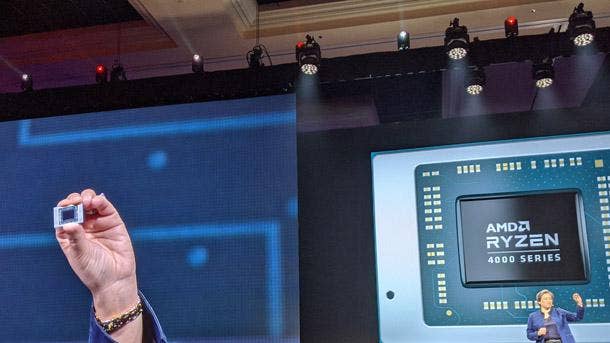
AMD Ryzen 4000 Series
AMD revealed its first 7-nanometer Ryzen processors for laptops, promising a mix of “ultra high-performance” and “ultrathin portability” that will reach more than 100 laptop designs in 2020, beginning in the first quarter.
AMD CEO Lisa Su called the new Ryzen 4000 series “the best” processors for ultrathin laptops, packing up to eight cores, 16 threads and a 4.2 GHz boost frequency in as little as a 15-watt thermal envelope.
The processors are split between three types: the U-series for ultrathin consumer laptops, the H-series for gaming and creator laptops and the Pro series for ultrathin commercial laptops.
At the top of the stack of the U-series is the AMD Ryzen 4800U, which comes with eight cores, 16 threads, up to 4.2GHz in boost frequency, a 1.7 GHz base frequency and eight Radeon GPU cores, all within a 15-watt thermal envelope that is needed for ultrathin laptops.
Comparing AMD’s Ryzen 7 4800U to Intel’s 10th-generation Core i7-1065G7, AMD’s new U-series processor provides 4 percent better single-threaded performance, 90 percent better multi-threaded performance and 28 percent better graphics performance.
For the H-series, the top processor is the Ryzen 7 4800U, which comes with eight cores, 16 threads, up to 4.2 GHz in boost frequency and a 2.9GHz base frequency within a 45-watt envelope.

AMD Ryzen Threadripper 3990X
AMD announced its most powerful desktop processor to date, the Ryzen Threadripper 3990X, which comes with 64 cores. That’s double the number of cores of the Threadripper 3970X that AMD released last fall and the same number of cores as AMD’s most powerful EPYC Rome server processors.
AMD CEO Lisa Su pitched the 64-core Threadripper as a content creation juggernaut, capable of performing render workloads 30 percent faster than two of Intel’s Xeon Platinum 8280 server processors at less than a fifth of the price. Compared to Intel’s top mainstream Core i9-9900KS desktop processor, Su said the Threadripper 3990X outperforms by several magnitudes.
Beyond its 64 cores, the Threadripper 3990X comes with 128 threads, up to a 4.3 GHz boost frequency, and2.9 GHz base frequency. The processor will be available for $3,990 on Feb. 7.
The Threadripper 3990X is coming out after AMD launched its first two third-generation Threadripper processors — the 24-core Threadripper 3960X and the 32-core Threadripper 3970X — as well as its top mainstream processor, the 16-core Ryzen 9 3950X last fall.
The processors, which are based on AMD's 7-nanometer Zen 2 architecture, are expected to create more competition for Intel in the high-end desktop and workstation markets.
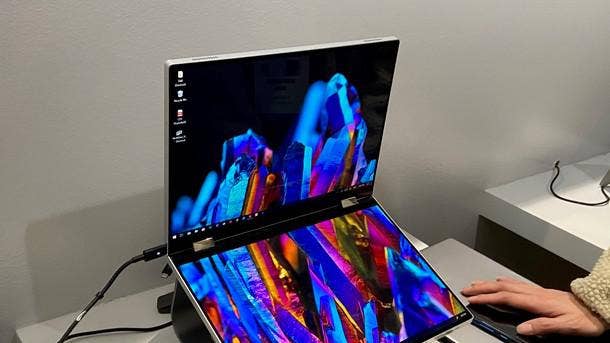
Dell Concept Duet And Concept Ori
Dell used CES 2020 to show off several concept devices of its own, including a pair of multi-screen devices. The Concept Duet (pictured) offers a similar form factor to a notebook, but with the difference that both of the surfaces are touch screen displays.
The two 13.4-inch displays can be used separately — such as for doing a conferencing call on the top display and viewing a presentation on the lower display — or can also be used together with a single piece of content running from one display onto the next.
While just a prototype at this point, we think the Concept Duet shows Dell's aptitude and intention for jumping into the dual-screen market before long.
Likewise, with the Concept Ori, Dell is showing it has been investing in developing foldable form factors, as well (though Dell is seemingly behind Lenovo in that regard). The Concept Ori offers a foldable 13-inch display that has no seams between the folded sides, Dell said.
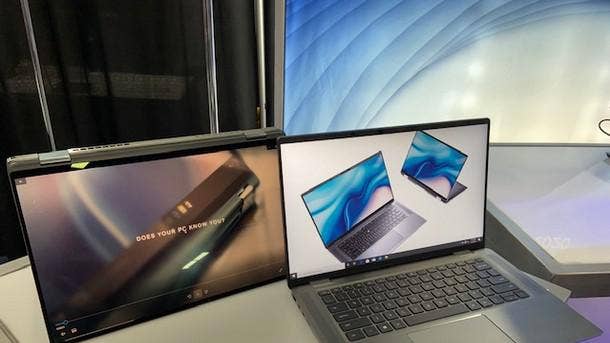
Dell Latitude 9510
Along with offering its vision for dual-display and foldable devices, Dell unveiled a brand-new series of business notebooks at CES 2020 — the Latitude 9000 series — which seeks to push the business computing category in a helpful new direction.
The first offering will be the Latitude 9510 notebook, available both as a 2-in-1 or a clamshell model. The notebook will include a 15-inch display with FHD resolution and slim bezels around the InfinityEdge screen. On battery life, the notebook is seeking to stand out with up to 30 hours of battery life on a charge. The Latitude 9510 will offer advanced connectivity, Dell said, with support for both Wi-Fi 6 and high-speed 5G mobile broadband.
Dell is also emphasizing the use of artificial intelligence with the Latitude 9510; key AI-powered features include ExpressResponse, which assesses user preferences and taps machine learning (with Intel Adaptix technology) to more quickly launch frequently used applications while also boosting application performance overall.
Dell has not yet released the starting price for the Latitude 9510. Both the 2-in-1 and clamshell versions of the notebook will be available on March 26.
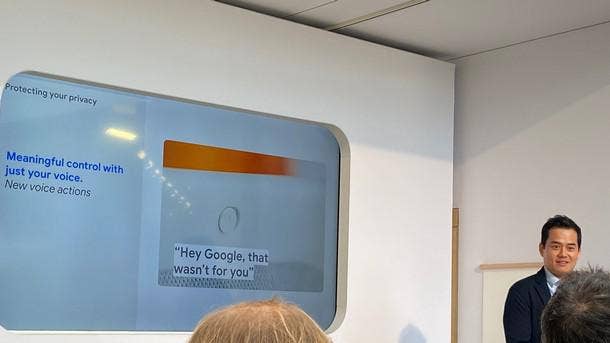
Google Assistant
With more than 500 million monthly active users of Google Assistant-enabled products, Google's voice-controlled smart assistant has made big strides in catching up to its earlier-to-market competitor, Amazon's Alexa.
At CES 2020, Google announced several upgrades to the Google Assistant that aim to make it stand out with users — including around privacy, where Google has been a frequent target of critics.
Austin Chang (pictured), director of product management for Google Assistant, announced that the Assistant will feature two new privacy controls that are themselves voice activated. The first is that you can now say, "Hey Google, that wasn't for you," to have the Assistant "forget" what it just heard you say. Users can also now say, "Hey Google, are you saving my audio data?" to get more information about privacy controls and be directed to the settings screen for changing privacy preferences.
In terms of new usability features, the Google Assistant will now gain new speech capabilities — with Google previewing more-natural reading of long-form content by the Assistant.
"This experience is built on new voice datasets to create more expressive and more natural sounding voices, so it's easier to listen for a longer period of time," Google said.
One area of focus for the technology is for reading online content such as blogs or news articles. Users will be able to say, "Hey Google, read this page" to trigger the feature. Google also said that the content will be able to be translated and read aloud in 42 languages.
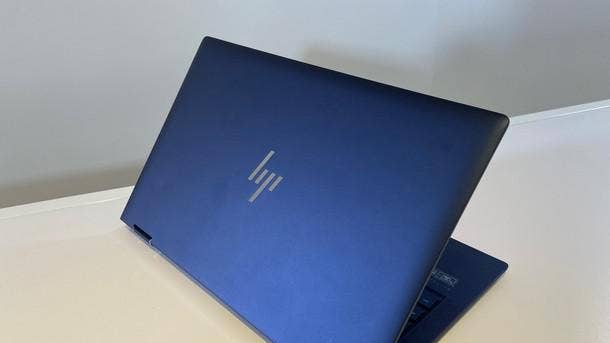
HP Elite Dragonfly G2
At CES, HP Inc. shared its own vision for evolving the business laptop segment, with the unveiling of the Elite Dragonfly G2.
Like the initial version from this past fall, the second-generation convertible will continue to feature a 13.3-inch display with FHD or UHD/4K resolution — but adds an option to include HP's new Sure View Reflect integrated privacy screen, which offers enhanced privacy.
The notebook is expected to be one of the first laptops to support high-speed 5G connectivity, with an option for including the Qualcomm Snapdragon X55 modem.
The most unique addition, however, is that Tile tracking technology is coming as a built-in feature to laptops for the first time with the Elite Dragonfly G2 — making it easier to track down the location of a lost notebook. On performance, the laptop will move up to Intel's latest processors, with 10th-generation Intel Core processors available, offering up to six cores.
The HP Elite Dragonfly G2 will be available "later in the summer," HP said. The company didn't disclose pricing details.
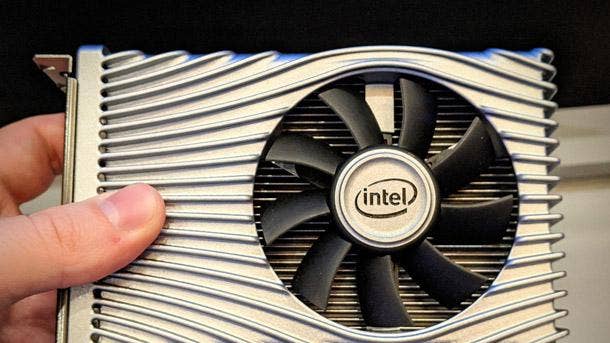
Intel’s First Discrete GPU, Code-Named DG1
After announcing its intent to enter the discrete GPU market in 2017, Intel demonstrated its first product in the category, a discrete graphics card code-named DG1 that is made for laptops.
Gregory Bryant, Intel’s top PC executive, said while “it’s early days” for DG1, it’s going to be “fantastic” not just for gaming but for content creation applications as well.
The company showed a laptop with DG1 running a live demo of the PC game Destiny 2 this week. But then on Thursday, Intel actually showed off a developer version of its DG1 discrete graphics card, which the company dubbed a “software development vehicle” that is being shipped to developers now.
The purpose of the DG1 special development vehicle is to encourage developers — whether they're making PC games, content creation programs or other kinds of applications — to optimize their software for Intel's upcoming Tiger Lake mobile processors and DG1, which which use the company's new Xe GPU architecture for integrated and discrete graphics, respectively.
When independent software developers (ISVs) receive the DG1 software development vehicle, it will come in a special development desktop PC the company has made.
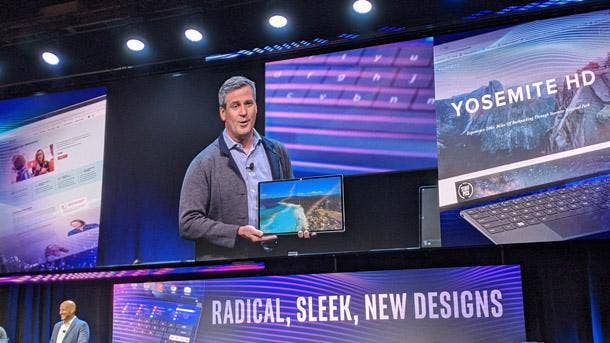
Intel Horseshoe Bend
With Intel’s Project Athena program, the chipmaker is finding new ways to lead in the mobile PC space, and those ambitions were on display in multiple ways.
First, the company said it plans to deliver a new specification for dual-screen PCs as part of Project Athena. This means OEM and ODM partners will be able to co-engineer new dual-screen PCs with Intel that provide a certain level of experience and performance.
Then the company showed off new dual-screen PCs it has co-engineered with Lenovo and Dell: the Lenovo ThinkPad X1 Fold, powered with Intel’s Lakefield hybrid processor, and the Dell Concept Duet.
Last, the chipmaker showed off its own concept PC, a device code-named Horseshoe Bend that comes with a foldable OLED display and runs on Intel’s upcoming Tiger Lake mobile processors.
The Horseshoe Bend is similar to the size of a 12-inch laptop, but its folding touchscreen display can open to a span of more than 17 inches. While the device is not for sale, it’s meant to serve as a potential reference design for OEMs to build from in the future.

Intel Tiger Lake Processors
Intel showed off its next batch of 10-nanometer processors for laptops, promising big performance gains over its current generation Ice Lake CPUs that debuted last year.
Code-named Tiger Lake, the processors are based on an advanced 10nm Core architecture, and they will be the first to use Intel’s new Xe GPU architecture for the processors’ integrated graphics, which means graphical performance that is on par with a discrete GPU and a double digit boost over Ice Lake.
The chipmaker is also promising a double-digit improvement in overall performance over Intel’s previous generation of mobile processors as well as a massive performance boost for artificial intelligence workloads, thanks to its Deep Learning Boost technology.
The first laptops to use Tiger Lake processors will start shipping later this year.
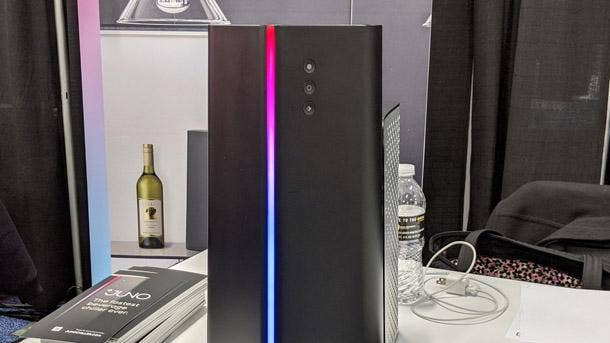
Juno
Juno is a beverage chiller that can bring a 12-ounce can of beer to ice-cold temperatures within two minutes. It can also chill a room-temperature 750-milliliter bottle of wine in under five minutes.
The device can chill beverages in a matter of minutes thanks to its integration of a thermoelectric cooling engine, combined with a proprietary mixing mechanism in a liquid bath. As a result, the device doesn’t use dangerous chemicals or toxic refrigerants to achieve a cooldown in such a short turnaround.
Juno is designed to fit on most kitchen countertops, and it can accept bottles or cans that measure up to 3.5 inches in diameter and 12.5 inches in height.
The device is available for preorder for $199 and will start shipping in the third quarter of this year.
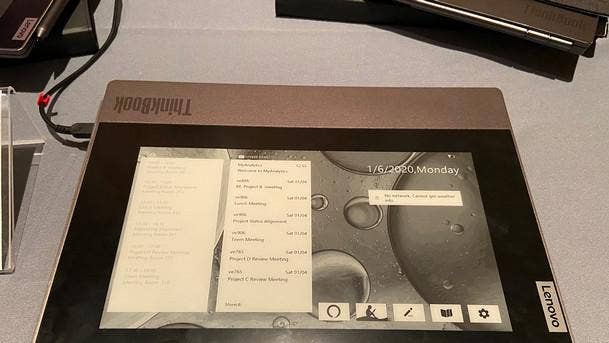
Lenovo ThinkBook Plus
Lenovo also grabbed our attention at CES 2020 by announcing some cool new features that are coming first to its SMB-focused laptop line, the ThinkBook (rather than to its ThinkPad or Yoga lines).
At CES, Lenovo showcased the next evolution of the ThinkBook series with a brand-new model, the ThinkBook Plus. The most unique new feature is a 10.8-inch E Ink display on the top cover — which can be used for taking notes or sketching with a digital stylus, as well as for getting emails and notifications. Lenovo executives said the addition of the feature came through feedback from ThinkBook business users.
For the main display, the ThinkBook Plus features a 13.3-inch FHD screen with 300 nits of brightness, while the notebook's chassis is made from anodized aluminum. The ThinkBook Plus offers 10th-gen Intel Core processors, up to a Core i7 — and remains highly portable with a starting weight of 3.08 pounds and a thickness of 0.68 of an inch.
The Lenovo ThinkBook Plus is planned for release in March for a starting price of $1,199.
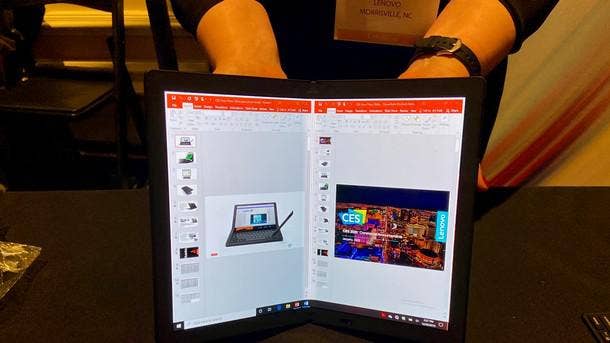
Lenovo ThinkPad X1 Fold
Lenovo made a splash at CES 2020 with its ThinkPad X1 Fold, which is poised to become the first mainstream foldable PC when it launches this year. The company used CES to showcase a wide range of possible use cases for the device — either as a tablet, a laptop or a desktop PC.
While X1 Fold does offer a digital on-display keyboard that can be used when the device is partially folded, the device also comes with a Bluetooth keyboard that can magnetically attach to the lower screen for use in a standard notebook fashion. (Helpfully, the Mini Fold Keyboard is also stored and charged inside the device when closed.) Apart from the keyboard, the ThinkPad X1 Fold can serve as a dual-display device with a number of options for multi-tasking across the two screens.
When opened fully in a tablet orientation, the device offers a 13.3-inch OLED display with resolution of 2,048 x 1,536. The X1 Fold includes a built-in kickstand for standing the device up while fully opened.
While the device will initially run a standard version of Windows 10, it will be offered with Windows 10X — which is optimized for dual-display devices — at a later date, Lenovo said. The X1 Fold will be powered by an Intel Core processor, and will also have an option for high-speed 5G connectivity. Meanwhile, the device will be highly portable with a weight of just 2.2 pounds.
Lenovo's ThinkPad X1 Fold is planned for release some time in mid-2020. The starting price is expected to be $2,499. The pricing includes the Mini Fold Keyboard and Active Pen stylus.
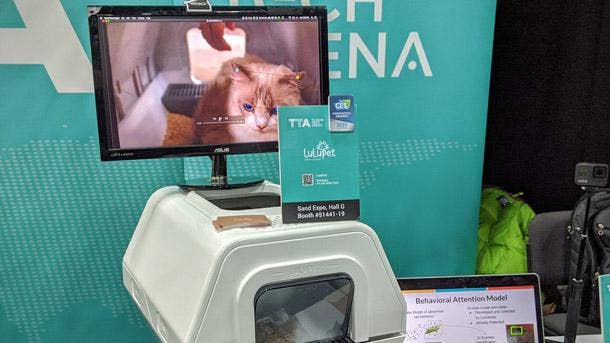
LuluPet Litter Box
LuluPet is a connected litter box that is using artificial intelligence to take a proactive approach on how you monitor your cat’s health.
The litter box comes with a camera and on-board AI chip that can recognize different types of cat feces, which can provide signs of bad health depending on the shape and consistency. This is made possible by a machine learning algorithm that has been trained using a method called transfer learning.
LuluPet also tracks body weight and the number of times the cat visits the litter box, and it can identify multiple cats using its AI capabilities, making it easy to track each individual cat’s health.
The litter box, which syncs with a smartphone companion app, allows you to enter the cat’s age, breed and lifestyle, so that it can be cross-analyzed with thousands of other cats in a database. The litter box is expected to cost $99 for pre-order when its Kickstarter crowdfunding campaign begins in March.
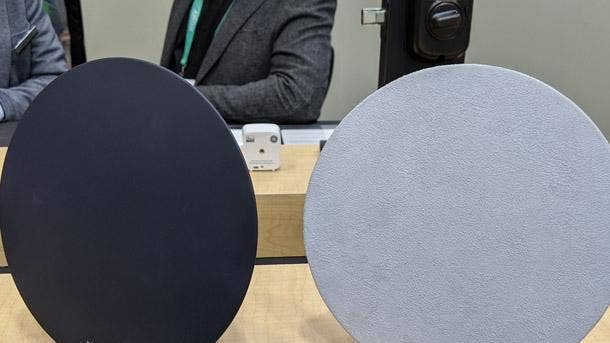
Mixtile Edge
With cloud data leaks the norm and privacy concerns mounting, the Mixtile Edge aims to keep your smart home’s processing within a local edge device.
The edge computing device, from the company Mixtile, is a sleek product designed to fit in with a modern home aesthetic and carry out processing tasks for smart home gadgets that would typically be done in the cloud, preventing the need to share data with a third party.
Revealed at this year’s CES, the Mixtile Edge connects all gateways and devices to form a large IoT network, and it features up to 1 TB of SSD storage, a powerful CPU and a high-speed neural processing unit as well as support for Zigbee and other wireless protocols.
While Mixtile sells its own collection of smart home gadgets, the Mixtile Edge is compatible with devices from several other companies, including D-Link, GE, August and TKB Home.
The Mixtile Edge is expected to start shipping in the summer, but no pricing information is available.
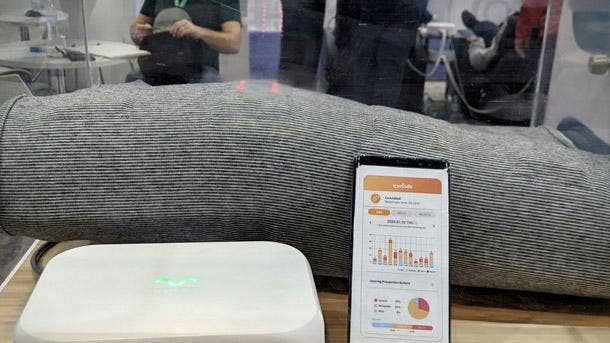
Motion Pillow
Motion Pillow aims to cut down on snoring with a connected pillow solution that automatically repositions the user’s head with an airbag to create a better posture for unimpeded nasal breathing.
The solution consists of a memory foam pillow that contains inflatable airbags as well as a bedside device that monitors and analyzes snoring patterns. The device syncs with a smartphone companion app that provides real-time analysis and reports of sleeping patterns.
The company behind the anti-snoring pillow, 10Minds, claims that the technology within the bedside device can detect snoring with a efficacy rate of more than 90 percent, which is above the industry standard, getting ride of the need to wear equipment on the face or nose.
10Minds recently launched an Indiegogo campaign for a second-generation version of the product, which is available for as low as $210, which is 50 percent off what the retail price will be. Shipping for Indiegogo backers is expected to start in April.
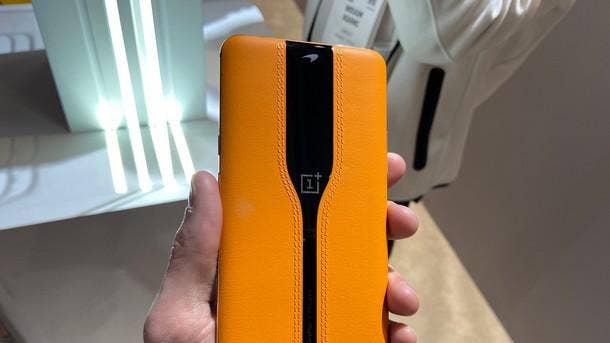
OnePlus Concept One
While CES hasn't been known of late as a smartphone-oriented show — due to its proximity to the annual Mobile World Congress — there was one impressive innovation in smartphones that debuted at CES 2020. That was the technology showcased by Android phone maker OnePlus as part of the OnePlus Concept One — a "concept" phone that is not planned for a commercial release.
As demonstrated during CES, the key advancement is an "invisible camera" design on the rear side of the phone. Using color-shifting glass technology — or more technically, electrochromic glass technology — OnePlus designed cameras that can change transparency and essentially "disappear" when not in use (the cameras only appear when the camera app is open).
That offers a major win on aesthetics, as the number of rear cameras on smartphones has proliferated and created a look that many find unappealing; but the use of the glass can also enable sharper photos when in strong light, thanks to the glass offering a built-in polarizing filter, OnePlus said.
While OnePlus does not have immediate plans to bring the invisible camera technology to its phones, there are plenty of reasons to expect this could be the future of smartphone camera designs for OnePlus and beyond (perhaps even for the iPhone, which we consider a chief offender on unpleasant rear camera layouts).
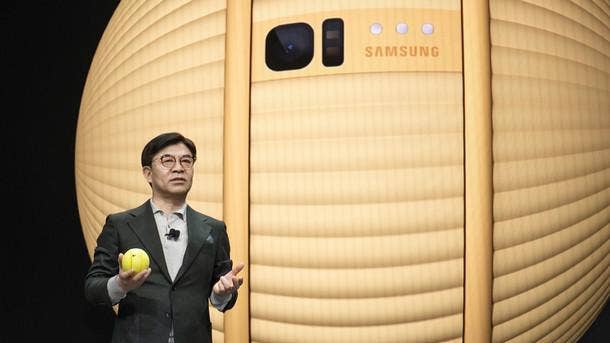
Samsung Ballie
Samsung surprised CES 2020 by teasing a fresh concept in smart home assistants — with a demo of a small rolling robot called Ballie.
The company touted Ballie as the future of personal care, and indicative of Samsung's "vision of a robot as a life companion," as Samsung Consumer Electronics CEO H.S. Kim (pictured) put it during the Samsung keynote on Monday. Main functions for Ballie will include patrolling the home or serving as a fitness assistant, a remote control and a camera that records "special moments."
Ballie will also be a "new friend to your kids and pets," said Sebastian Seung, executive vice president and chief research scientist, in the Samsung keynote.
The robot will be able to modify its actions based on voice control, such as when a Samsung executive asked Ballie to "move a little faster" while following him onstage. (However, the company made sure to include a disclaimer during the presentation that "some functions may differ from the actual product.")
The demo and video did not show Ballie itself speaking, though the robot, which is roughly the size of a softball, was shown making chirping sounds in the video as it rolled around a home completing its tasks.
Ultimately, though, Seung suggested that Ballie will be "part of the next evolution of IoT," in an "actively helpful" direction. Samsung did not offer an expected release timeframe or pricing for Ballie.
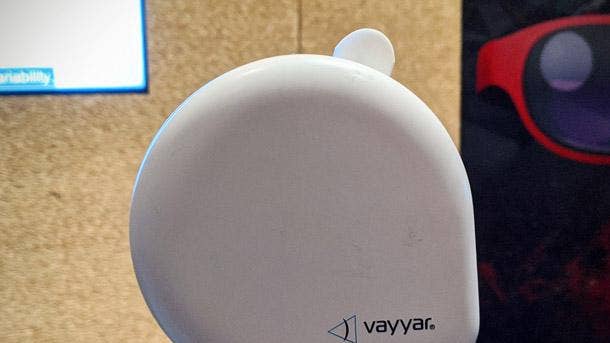
Vayyar Home
Vayyar Home is a smart home monitoring system that uses 4D radar imaging sensors to monitor the wellbeing of individuals within a home environment or senior living facility. This means there is no need for wearable technology, buttons or cameras to detect falls or home intrusions.
The device’s sensors can monitor location, posture and vital signs, which allows caretakes to keep track of when individuals get in and out of bed, roam at night and visit the bathroom.
The device, in conjunction with Vayyar’s software, can also analyze the data to identify trends, which as whether there are early signs of health conditions, like dementia and UTI.
While the device is expected to start shipping in the first quarter, there are currently no pricing details available. A Vayyar spokesperson said the pricing will be reasonable for consumers.

Vuzix Blade
At CES 2020, augmented-reality devices specialist Vuzix showed off some major updates coming to its Blade smart glasses wearable.
Since the launch of Vuzix Blade in 2018, the AR glasses have targeted workplace applications by providing a display that's overlaid on top of a pair of see-through glasses. Functionality ranges from receiving work instructions and data in real time to checking appointments and taking photos with voice commands.
The newly enhanced version of the Vuzix Blade — which is set for release during the first quarter of the year — will for the first time include built-in speakers for more versatile use cases such as listening to audio instructions. The updated smart glasses will also add auto-focus to the device's camera.
The Vuzix Blade is priced at $799.99. (Pictured is Vuzix representative Amber Vaatete.)

Wi-Charge Wireless Power System
At CES 2020, Wi-Charge showed that it’s gaining momentum in its efforts to bring wireless-charging over a distance into common usage.
Wi-Charge says that its system uses infrared technology to efficiently — and safely — deliver several watts worth of power at "room-sized" distances. The system works similarly to Wi-Fi, but for electricity; a transmitter plugged into a wall can send power to devices that have the Wi-Charge receiver embedded.
The vision is to provide a continuous charge to all devices, including smartphones and smart-home devices, so that they never need to be plugged in, according to the company.
In connection with CES, Wi-Charge announced collaborations with three manufacturers of fixtures for commercial and residential bathrooms. The partnerships involve embedding Wi-Charge technology into a GOJO Purell hand sanitizer dispenser, a Hansgrohe smart faucet and a Sloan sensor flushometer.